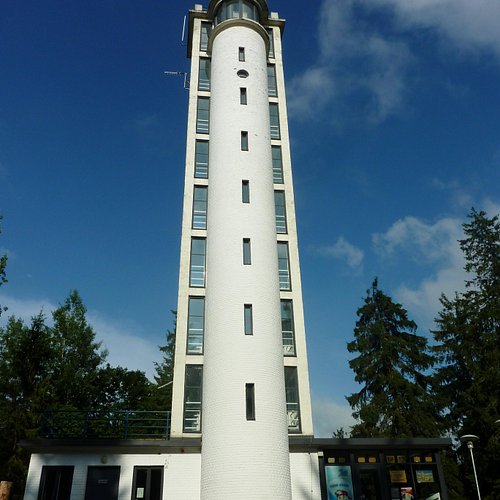What to do and see in Haanja, Voru County: The Best Things to do
Discover the best top things to do in Haanja, Estonia including Uue-Saaluse Winery, Mooska Farm and Smoke Sauna, Observation Tower on Suur Munamagi, Monument to the War of Independence At the Foot of Suur Munamagi, Lake Kavadi, Vallamae Hiking Trail, Vallamagi, Plaani Orthodox Church.
1. Uue-Saaluse Winery
Overall Ratings
5.0 based on 3 reviews

We are a small family winery in the South Estonia. We make berry and fruit wines from local raw produces. We have the highest locating organic seabuckthorn and grape field in Estonia. We make exciting wines from seabuckthorn, black currant, rhubarb, rowan fruit, raspberry and aronia. Come and check how our wines are made! Our wine tour includes walk in berry field (May-October), visiting the winery and tasting 5 different wines. Our wine store is full of wonderful tastes.
2. Mooska Farm and Smoke Sauna
Overall Ratings
5.0 based on 11 reviews
Reviewed By ppikeban - Great Falls, United States
Recently four of us experienced an authentic Estonian smoke sauna to learn about the country culture and practices in a unique and wonderful way. We met the most knowledgeable practitioner, Eda at her beautiful farm. We had a delightful and fascinating experience in the sauna, moist wood heated stones, a salt scrub, mud scrub, stimulating circulation with leafy branches. Throughout the sauna, the associated folk traditions were told by Eda through stories, drumming and repeating mantras. The pond nearby provided a cooling dip (for those who want the real experience). We were also able to sample the local food and meats smoked at the farm. This was an amazing visit on our tour and is highly recommended for those interested in folk lore. The sauna is on the UNESCO list of cultural heritage due to the efforts in Eda's interest in preserving these country traditions. Plan on at least 3 hours. An unforgettable experience.
3. Observation Tower on Suur Munamagi
Overall Ratings
4.5 based on 43 reviews
Suur Munamagi is the highest point in the Baltics and stands at 318 metres from sea level. The observation tower on Suur Munamagi provides a splendid view of Estonian nature within the range of 50 km. The existing tower is the 6th in number; it was built in 1939 and reconstructed in 1969; its present height is 29.1 metres. The tower was renovated again in 2005 and an elevator was added to its back side. Interesting to know:* when standing on the top of the tower, you will be 346.7 metres above sea level.* the very first tower was built in 1812 by soldiers and under the supervision of a Russian officer.
4. Monument to the War of Independence At the Foot of Suur Munamagi
Overall Ratings
4.5 based on 2 reviews
The Monument to the War of Independence was erected in 1932 to commemorate the soldiers of the 1st Cavalry Regiment who fought and perished in the Munamagi battle during the War of Independence. The monument was re-opened on 7 august 1988.
5. Lake Kavadi
Overall Ratings
4.0 based on 1 reviews
Lake Kavadi got its present size and looks around 1880, when Baron Constantin Fr. von Maydell, who had bought the Uue-Saluse Manor, dammed up three small bog lakes. The lake covers 27.4 ha and is situated 210.4 metres above sea level; its maximum depth is 8.2 metres. Lake Kavadi is said to be the lake with the most dissected coastline in Estonia and it is definitely one of the most beautiful Estonian lakes with its four islands. About 400 metres southwest from the lake, there is Haalimagi (height 274.3 metres) that offers splendid views. There is also a hiking trail running around Lake Kavadi that starts and ends in Uue-Saluse Park, where you can put up your tent or take a swim.
6. Vallamae Hiking Trail
Overall Ratings
4.0 based on 1 reviews
The 3.6 km long Vallamae hiking trail runs straight from its foot to its top. Vallamagi is the second highest hill in Estonia, covered with primeval forests and with very steep slopes, it is 303.9 m above sea level. However, if we take the 84 metres from its foot to its top, we can say that it is the highest hill in Estonia by its relative height. Its slopes are very steep in some places (slanting 35 to 40 degrees). Vallamae forests have been the reserve of fir gene pools since 1992.At foot of the hill there is a hikers’ cabin where you can take a rest and enjoy the primeval landscape (only by prior reservations; to make a reservation, please call the RMK centre at +372 628 1532).
7. Vallamagi
Vallamagi is one of the biggest natural landforms in Estonia with an altitude of 304 metres. When considering relative height, Vallamagi is the highest mountain in Estonia, topping Suur Munamagi. The hiking trail on Vallamagi runs along the sides of Vallamagi, with slopes of 35–40 degrees in places. There's also a pleasant surprise in the midst of primeval spruces for the hikers: a scenic hiking cabin with a sauna. This building gives an idea about the numerous small farms that used to stand in these forests.Useful information: It will rain, if Vallamagi steams. The bog with the thickest layer of peat and with the highest location in Estonia is on Vallamagi.
8. Plaani Orthodox Church
Plaani Orthodox church dates from the times of the Tsarist conversions and symbolises one of the eras of the Christianising of Estonia. Consecrated in honour of St. Nicholas in 1874, the church was erected on land belonging to Plaani manor. It boasts five 'onion' domes and is a typical construction of stone and fired brick. It also has its own cemetery.Did you know...?*The church was used as a storehouse by the local collective farmers during the Soviet era*When the first Republic of Estonia was established, the Apostolic Orthodox Church in the country applied to found a monastery here



